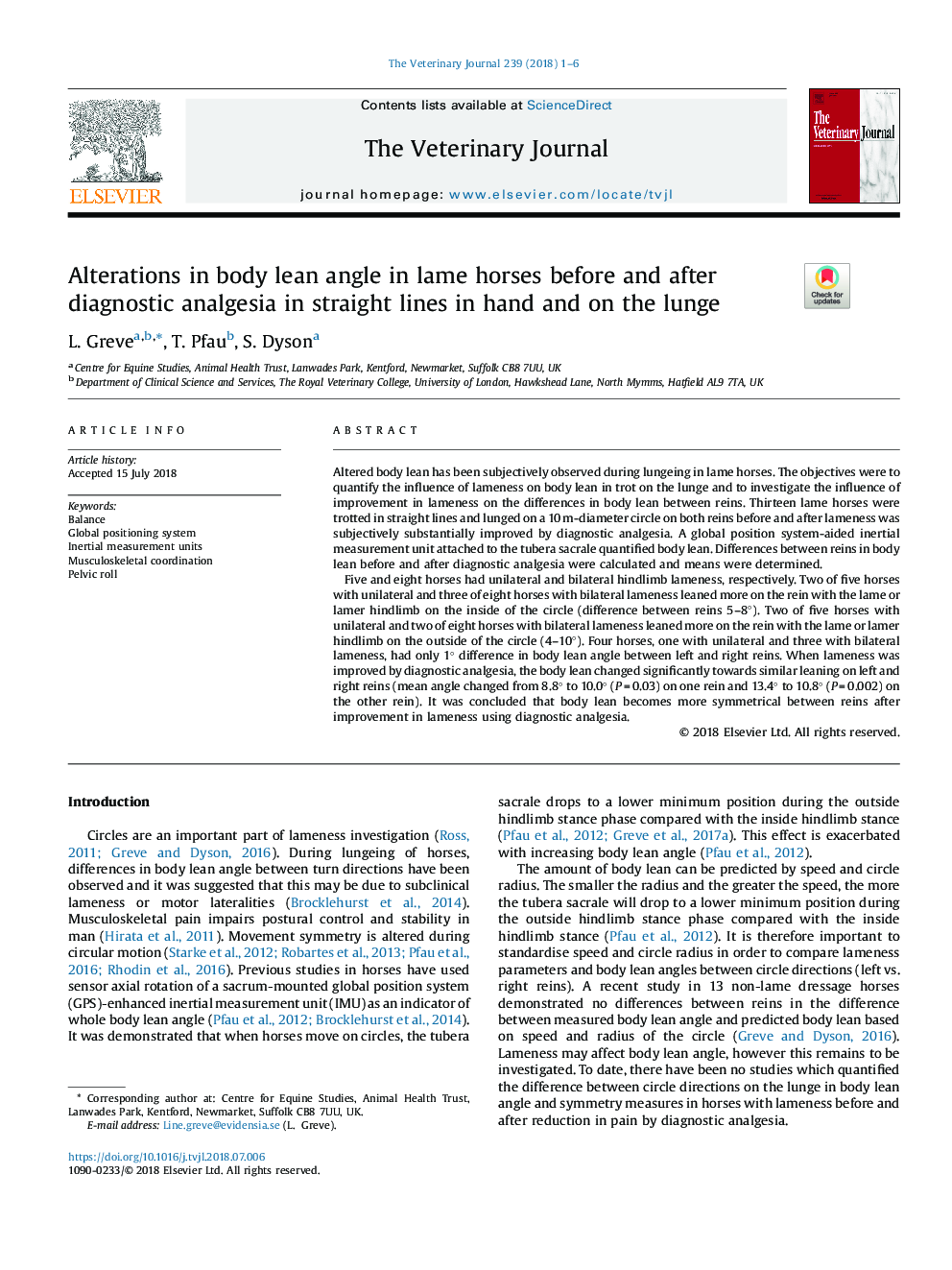| Article ID | Journal | Published Year | Pages | File Type |
|---|---|---|---|---|
| 8504817 | The Veterinary Journal | 2018 | 6 Pages |
Abstract
Five and eight horses had unilateral and bilateral hindlimb lameness, respectively. Two of five horses with unilateral and three of eight horses with bilateral lameness leaned more on the rein with the lame or lamer hindlimb on the inside of the circle (difference between reins 5-8°). Two of five horses with unilateral and two of eight horses with bilateral lameness leaned more on the rein with the lame or lamer hindlimb on the outside of the circle (4-10°). Four horses, one with unilateral and three with bilateral lameness, had only 1° difference in body lean angle between left and right reins. When lameness was improved by diagnostic analgesia, the body lean changed significantly towards similar leaning on left and right reins (mean angle changed from 8.8° to 10.0° (P = 0.03) on one rein and 13.4° to 10.8° (P = 0.002) on the other rein). It was concluded that body lean becomes more symmetrical between reins after improvement in lameness using diagnostic analgesia.
Related Topics
Life Sciences
Agricultural and Biological Sciences
Animal Science and Zoology
Authors
L. Greve, T. Pfau, S. Dyson,
